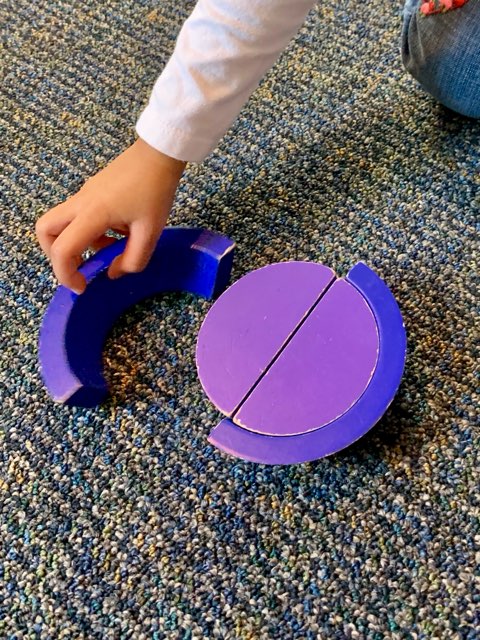
Engineering Puzzle Fun

Out of the corner of my eye, I am drawn to the persistence of three-year-old Saaliha, who is calmly and patiently working her way through a rainbow puzzle.
Her friends are busy in other parts of the classroom, but Saaliha is problem-solving her way to mastery. I sit down next to her to observe her skills.
She is so absorbed in her learning that she doesn't even notice my presence.
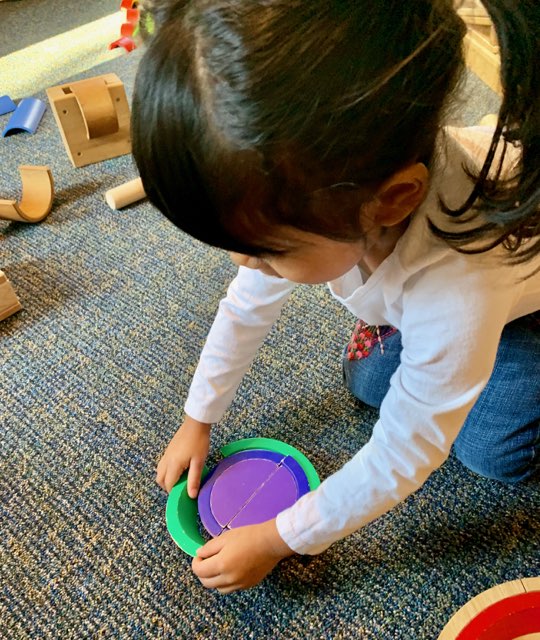
Open-ended materials such as rainbow puzzles often create learning scenarios that lead to long periods of deep concentration—and today is no different.
In early childhood, when youngsters like Saaliha are soaking up knowledge like sponges, puzzles are powerful learning tools that help foster the development of foundational science and engineering skills.
This particular wooden puzzle often lands in the block area as a snake, tunnel, or flowing river. But today, Saaliha is trying to fit the pieces back together in the way that they are stored in their round tray.
This kind of open-ended play helps young children learn how to think like engineers. When they try out different ways to meet a challenge, they learn about the power of problem-solving and testing out ideas until they find the best solution.
As young children figure out how puzzle pieces fit together in unexpected ways, their creativity soars. They begin to engage in what engineers call "design thinking," a form of creative problem-solving that leads to some of our world's most innovative ideas and inventions.
When problems arise in puzzle play and children test out different solutions, they also develop traits that will serve them well throughout their lives, such as adaptability, perseverance, and resilience.
These skills develop when early learners have the time and freedom to explore and experiment with different objects and materials. During puzzle play, every twist and turn of a puzzle piece becomes a new possibility and a new way of seeing the world!
This approach is engaging and effective for our early engineering explorers, nurturing a growth mindset that sees potentially frustrating problems and challenges as opportunities for design thinking and creative solutions.
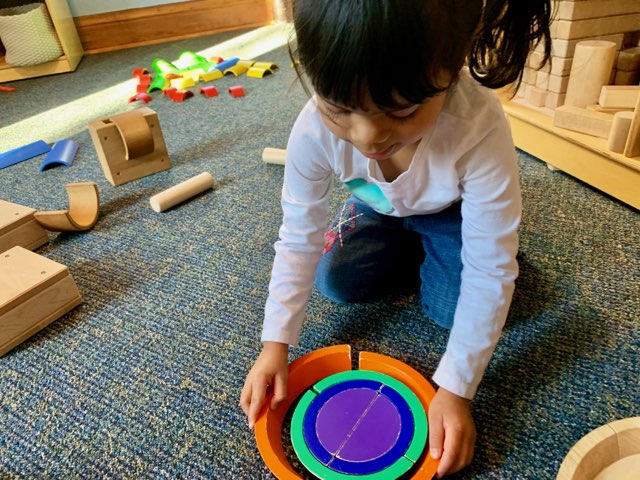
Puzzle play is also a great way to build cognitive and fine motor skills. Besides finding the correct sequence of sizes, Saaliha must evaluate how to arrange the blocks so that the completed puzzle will fit into its round tray.
I watch as she flips, turns, and rotates the pieces to determine where they go and in what order.
This process—called spatial transformation—refers to a child's ability to mentally manipulate or visualize how objects or shapes will look if rotated, flipped, or moved in space. This ability to envision the different possibilities for puzzle piece placement paves the way for the development of spatial reasoning skills and later STEM learning.
I love watching Saaliha's learning style and seeing how it corresponds to her developmental level. I see her set aside pieces that are not needed at the moment. Her spatial awareness is growing with each try.
Saaliha’s hands and brain work together as she tests different orientations and learns how the puzzle pieces relate to one another. Each move is like a mini experiment: "What happens when I rotate this piece? What happens when I try another direction?"
This trial-and-error process is a key part of engineering design and problem-solving.
But the benefits don’t stop there. Saaliha is also developing critical thinking skills as she begins to discern patterns, anticipate how pieces might fit, and make adjustments based on her observations.
She is learning the basic principles that engineers rely on to troubleshoot and innovate!
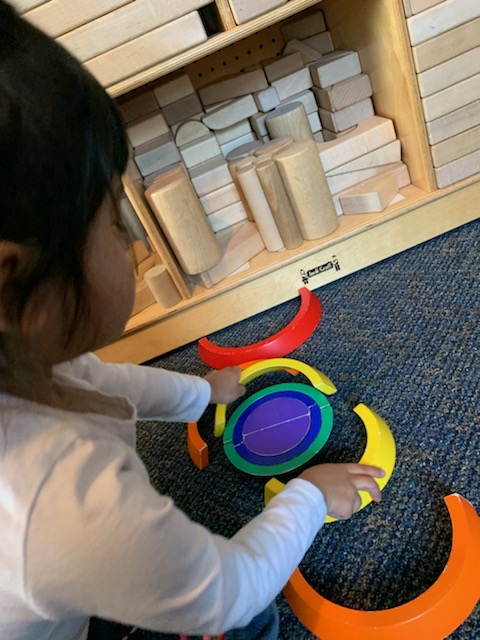
I can see Saaliha's choices and strategy changing as she begins to understand how the pieces fit together to complete the puzzle. I watch her sort the pieces and move them in different directions until she finds a fit, completes the puzzle, and fits it into its tray.
This is a multifaceted learning adventure that strengthens the small muscles in Saaliha's hands and fingers, as well as her manual dexterity, eye-hand coordination, fine motor skills, and critical thinking skills!
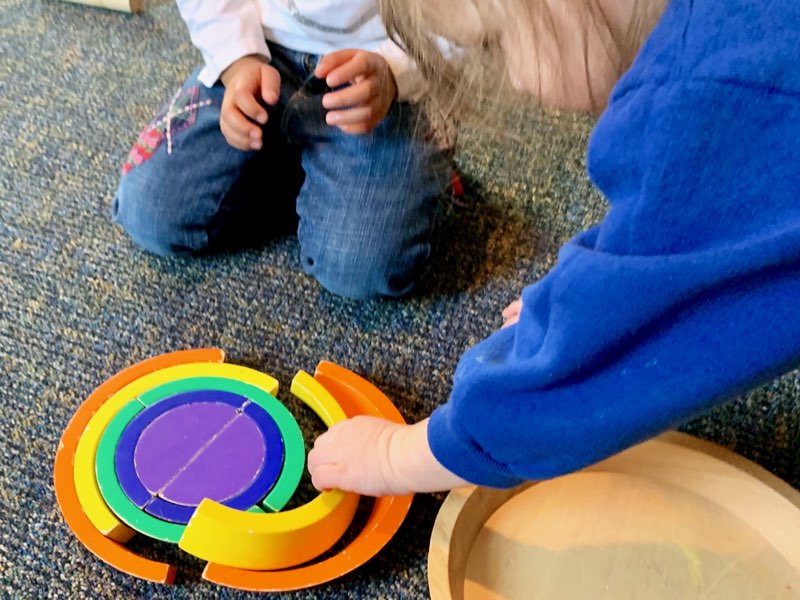
Saaliha is soon joined by her two-year-old buddy, Eleanor. These two best friends are 11 months apart in age, with different learning styles and levels of brain development.
The two girls work together to fit the yellow arch into the puzzle. They engage in a discussion as they describe their strategies to one another.
The collaboration is delightful as Saaliha patiently watches her younger friend try to master the same issue that she is having. Saaliha never reaches over to remove the puzzle piece from Eleanor's hand. She is observing and reasoning as deeply as she had been moments earlier when the puzzle piece was in her own hand.
Science is all about observation, inquiry, and problem-solving—and puzzles offer an opportunity to engage in all three of these scientific methods.
By solving puzzles, children learn to observe patterns, identify relationships between pieces, and apply critical thinking skills. These foundational skills are essential for later academic success and a lifelong appreciation of the scientific method.
Eleanor quickly loses interest, but Saaliha perseveres!
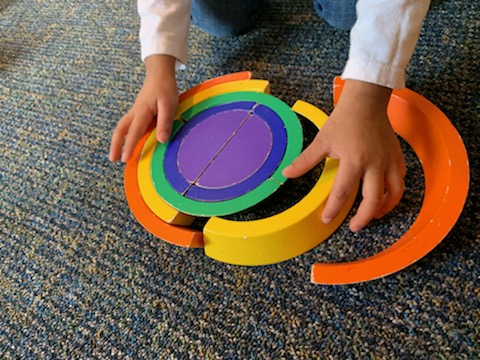
Saaliha is now experimenting with new pieces and directions. I can see the wheels turning in her head as she hatches new ideas and works out different theories.
She is not rushed or agitated. Instead, she is riveted to this learning opportunity. She doesn’t ask for assistance; she just keeps trying out new patterns and new pieces.
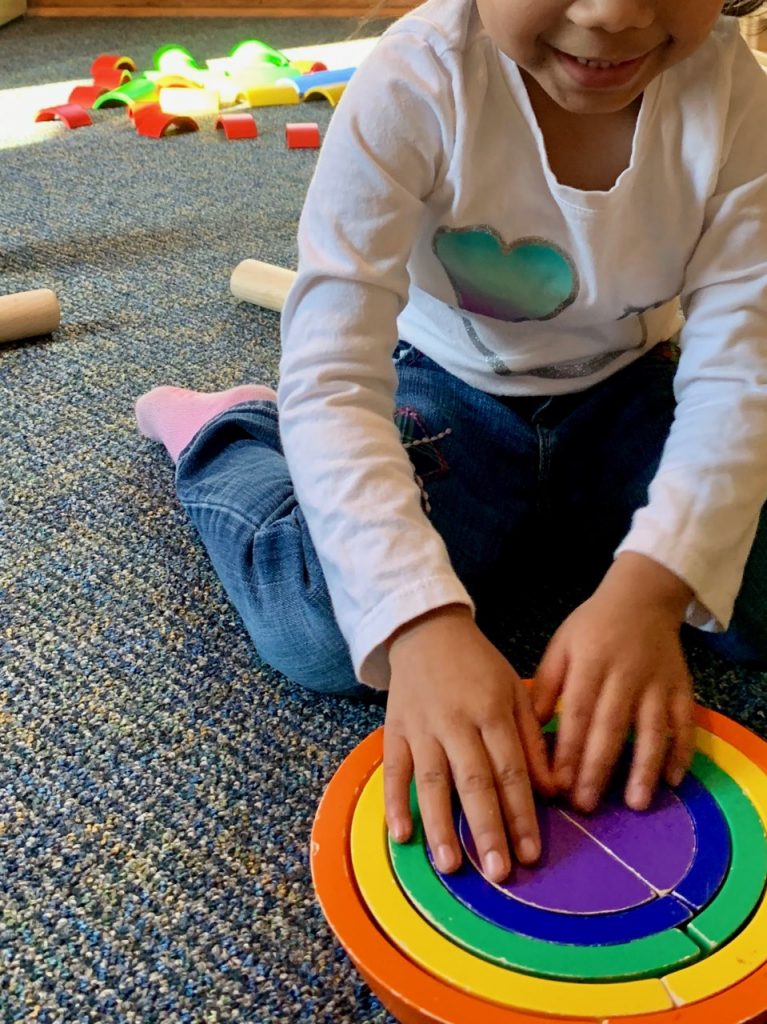
Suddenly, it all clicks into place. I can see the flash of comprehension in Saaliha's eyes. Her confidence surges as she fits the pieces together more quickly.
She's got it! She's figured it out! There is no celebration, just a smile of satisfaction. Saaliha studies the finished project. Then she disassembles the puzzle to do it over again!
Puzzles offer a variety of developmental benefits and enable children to learn important skills as they play.
From critical thinking, concentration, and problem-solving to spatial awareness, playing with puzzles adds layer upon layer to every early learner's strong science foundation!